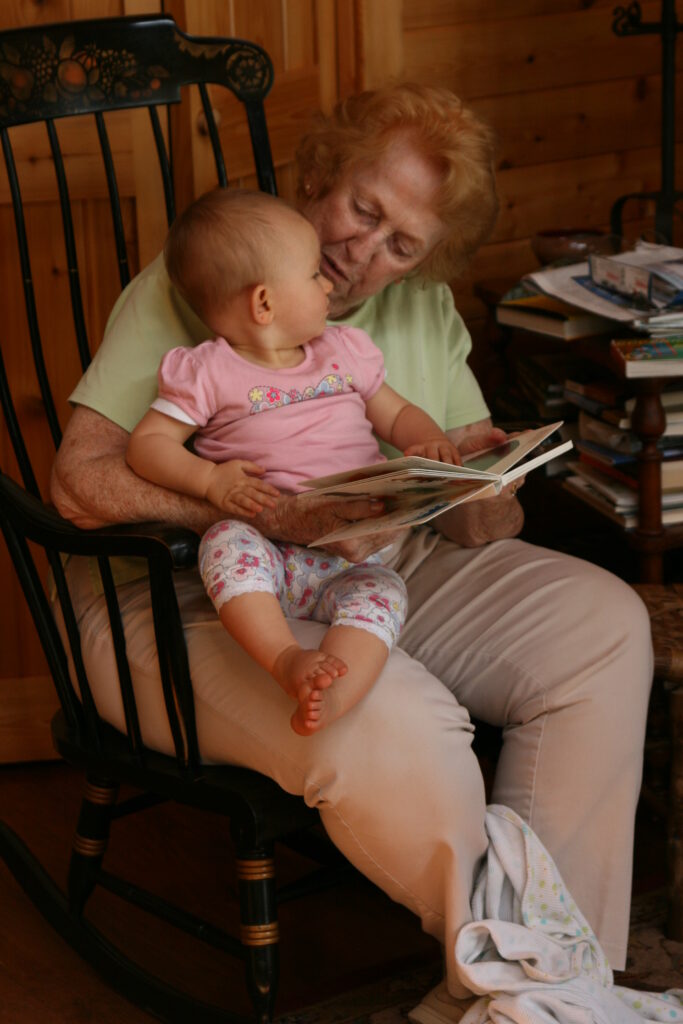Editor’s Note: “Literacy” begins long before a child can read for herself. Here, Gladys Hunt muses about how to take those first steps.

How do you encourage preschool literacy?
Originally published on the Tumblon website, June 16, 2009
Preschoolers develop an awareness and an interest in reading at different times. A child’s brain, eye-coordination and curiosity is an individual matter of maturity. One child may want to learn the alphabet at age two, and another may not be interested until age four and a half. Don’t judge intelligence by early or late maturity. Be patient and encourage.
The National Institute for Literacy has developed a checklist for parents of preschoolers who want to encourage reading, particularly aimed at ages four and five. Here’s their list for your consideration.
- I help my child hear and say the first sound in words (like “b” in boat),and notice when different words start with the same sound (like “boat” and “book.”)
- I help my child hear words that rhyme (like moose, goose and caboose.)
- I introduce new words to my child, like “bow” and “stern” for the front of a boat and the back of the boat.
- I talk with my child about the letters of the alphabet and notice them in books, like “c” for canoe.
- I point out signs and labels that have letters, like street signs and foods in the grocery store.
- I encourage my child to find joy and fun in reading. Usually, I let my child choose which books we will read.
- I let my child pretend to read parts of the book when we read together.
- I talk with my child about stories and make connections to things that happen in our lives.
- I ask “what,” “where,” and “how” questions when I read with my child to help him follow along and understand the stories.
- I help my child write notes and make books (like an alphabet book), even if his writing only looks like scribbles or marks.
For more information from this source, access www.nifl.gov.
Good stories give us lots to talk about. Part of the value of reading aloud to your child is the social interchange in the conversations that come from the book. That’s why asking questions about the story is a good idea.
You may end of up with a really creative child, like one of our little boys who knew his alphabet letters, but didn’t want to put them in the right order. Why was that important? Answering him was a challenge. He was hardly interested in the concept of “filing” or the dictionary! But if you can ask questions, so can he—and it may be questions that make you think—like the one he asked.
© Gladys M. Hunt 2008-10, reissued in 2022 with minor adjustments with permission of the Executor of the Literary Estate of Gladys M. Hunt (4194 Hilton SE, Lowell, MI 49331). Used by permission. All rights reserved.
Support our writers and help keep Redeemed Reader ad-free by joining the Redeemed Reader Fellowship.
Stay Up to Date!
Get the information you need to make wise choices about books for your children and teens.
Our weekly newsletter includes our latest reviews, related links from around the web, a featured book list, book trivia, and more. We never sell your information. You may unsubscribe at any time.
We'd love to hear from you!
Our comments are now limited to our members (both Silver and Golden Key). Members, you just need to log in with your normal log-in credentials!
Not a member yet? You can join the Silver Key ($2.99/month) for a free 2-week trial. Cancel at any time. Find out more about membership here.

